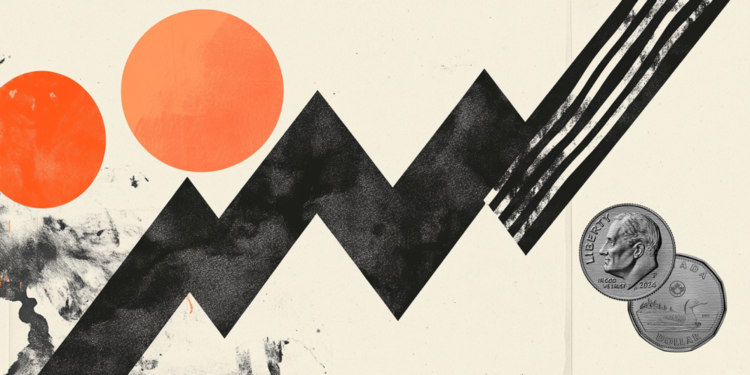- USD/CAD edges higher as the US Dollar strengthens due to optimism surrounding potential US trade deals.
- Washington appears to be making headway in early trade discussions with Asian allies, including South Korea and Japan.
- The Canadian Dollar remains under pressure as Trump suggested that the 25% tariff on Canadian auto imports could be raised.
USD/CAD recovers its recent losses from the previous session, trading around 1.3870 during the Asian hours on Friday. The pair gains as the US Dollar (USD) strengthens, supported by optimism surrounding potential US trade deals. According to Reuters, Washington appears to be making headway in early trade discussions with Asian allies, including South Korea and Japan.
However, the Greenback encountered some pressure following Thursday’s release of Initial Jobless Claims data. The US Department of Labor reported that claims rose to 222,000 for the week ending April 19, slightly exceeding expectations and up from the prior week’s revised figure of 216,000. Meanwhile, Continuing Jobless Claims fell by 37,000 to 1.841 million for the week ending April 12.
Minneapolis Fed President Neel Kashkari expressed concern late Thursday about the potential for future layoffs amid ongoing uncertainty. While he noted that there hasn’t been a noticeable increase in layoffs yet, some businesses are reportedly preparing for that possibility if uncertainty persists. Kashkari added that resolving trade tensions could ease concerns and support a more optimistic outlook.
Additionally, the USD/CAD pair gained further support as the Canadian Dollar (CAD) came under pressure following comments from US President Donald Trump on Wednesday. Trump suggested that the 25% tariff on Canadian auto imports could be raised, reinforcing his commitment to securing a trade deal with Canada. The goal, he emphasized, is to bolster US auto production and lessen dependence on foreign vehicles, according to Reuters.
Canadian Dollar PRICE Today
The table below shows the percentage change of Canadian Dollar (CAD) against listed major currencies today. Canadian Dollar was the weakest against the US Dollar.
| USD | EUR | GBP | JPY | CAD | AUD | NZD | CHF | |
|---|---|---|---|---|---|---|---|---|
| USD | 0.39% | 0.28% | 0.23% | 0.11% | 0.23% | 0.25% | 0.42% | |
| EUR | -0.39% | -0.11% | -0.15% | -0.30% | -0.15% | -0.13% | 0.02% | |
| GBP | -0.28% | 0.11% | -0.04% | -0.17% | -0.03% | -0.02% | 0.11% | |
| JPY | -0.23% | 0.15% | 0.04% | -0.12% | -0.02% | -0.02% | 0.14% | |
| CAD | -0.11% | 0.30% | 0.17% | 0.12% | 0.04% | 0.14% | 0.28% | |
| AUD | -0.23% | 0.15% | 0.03% | 0.02% | -0.04% | 0.02% | 0.15% | |
| NZD | -0.25% | 0.13% | 0.02% | 0.02% | -0.14% | -0.02% | 0.13% | |
| CHF | -0.42% | -0.02% | -0.11% | -0.14% | -0.28% | -0.15% | -0.13% |
The heat map shows percentage changes of major currencies against each other. The base currency is picked from the left column, while the quote currency is picked from the top row. For example, if you pick the Canadian Dollar from the left column and move along the horizontal line to the US Dollar, the percentage change displayed in the box will represent CAD (base)/USD (quote).

